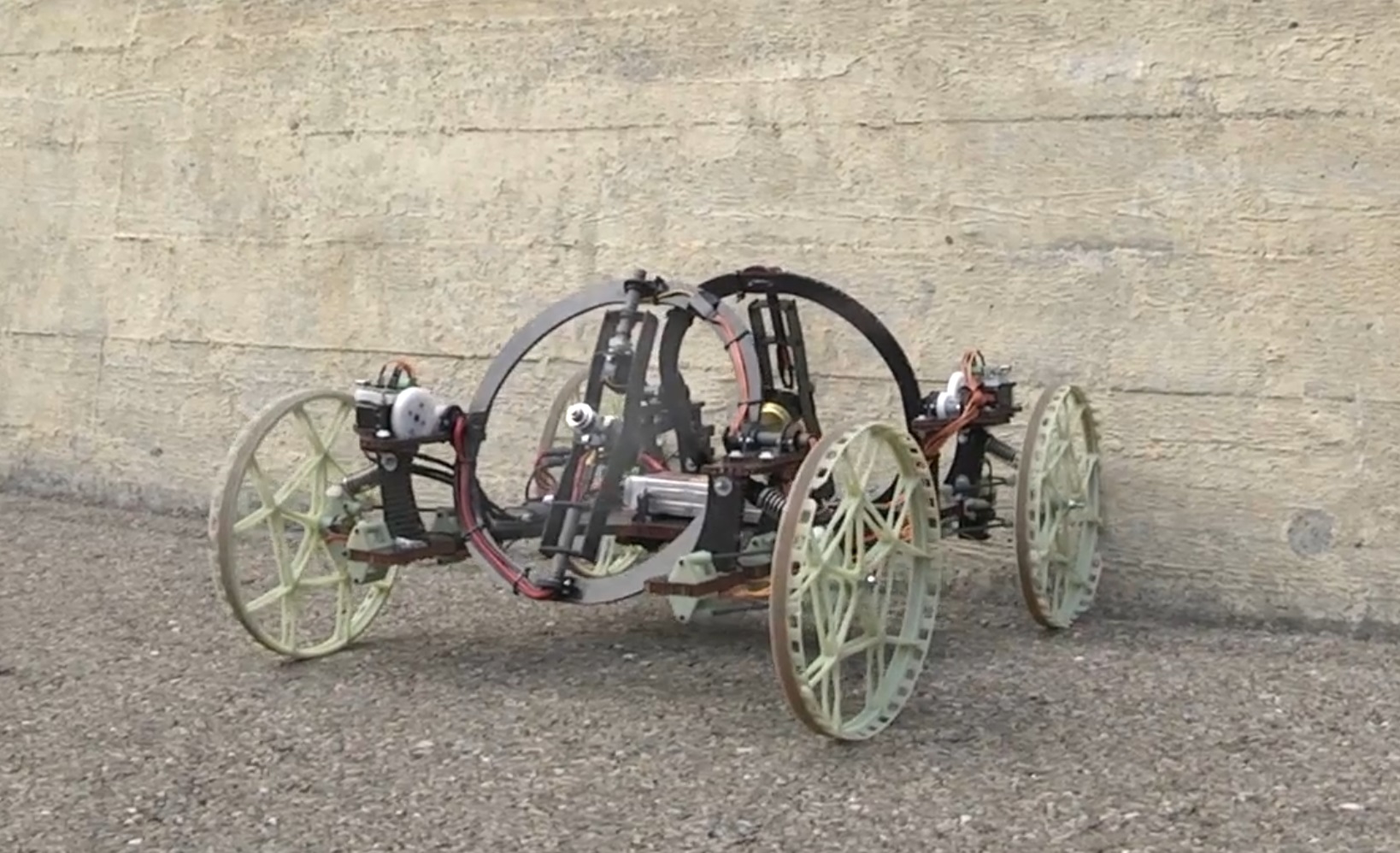
Disney Research Zurich and ETH has developed VertiGo, a wall-climbing robot that can transition from the ground to the wall.
The robot has two tiltable propellers that provide thrust onto the wall, and four wheels. One pair of wheels is steerable, and each propeller has two degrees of freedom for adjusting the direction of thrust. By transitioning from the ground to a wall and back again, VertiGo makes it easier for the robot to travel through urban and indoor environments.
According to the researchers, two propellers were chosen rather than one to enable a better floor-to-wall transition. Thrust is applied both towards the wall using the rear propeller, and in an upward direction using the front propeller, resulting in a flip onto the wall.
A key research problem in the design of the VertiGo robot was to maximize the ratio between thrust output and vehicle weight. The weight was minimized by using a central carbon fiber baseplate, while 3D printed parts in conjunction with carbon rods are used for more complex three dimensional structures such as the wheel suspension or the wheels themselves.
This story is reprinted from material from Disney Research, with editorial changes made by Materials Today. The views expressed in this article do not necessarily represent those of Elsevier.




